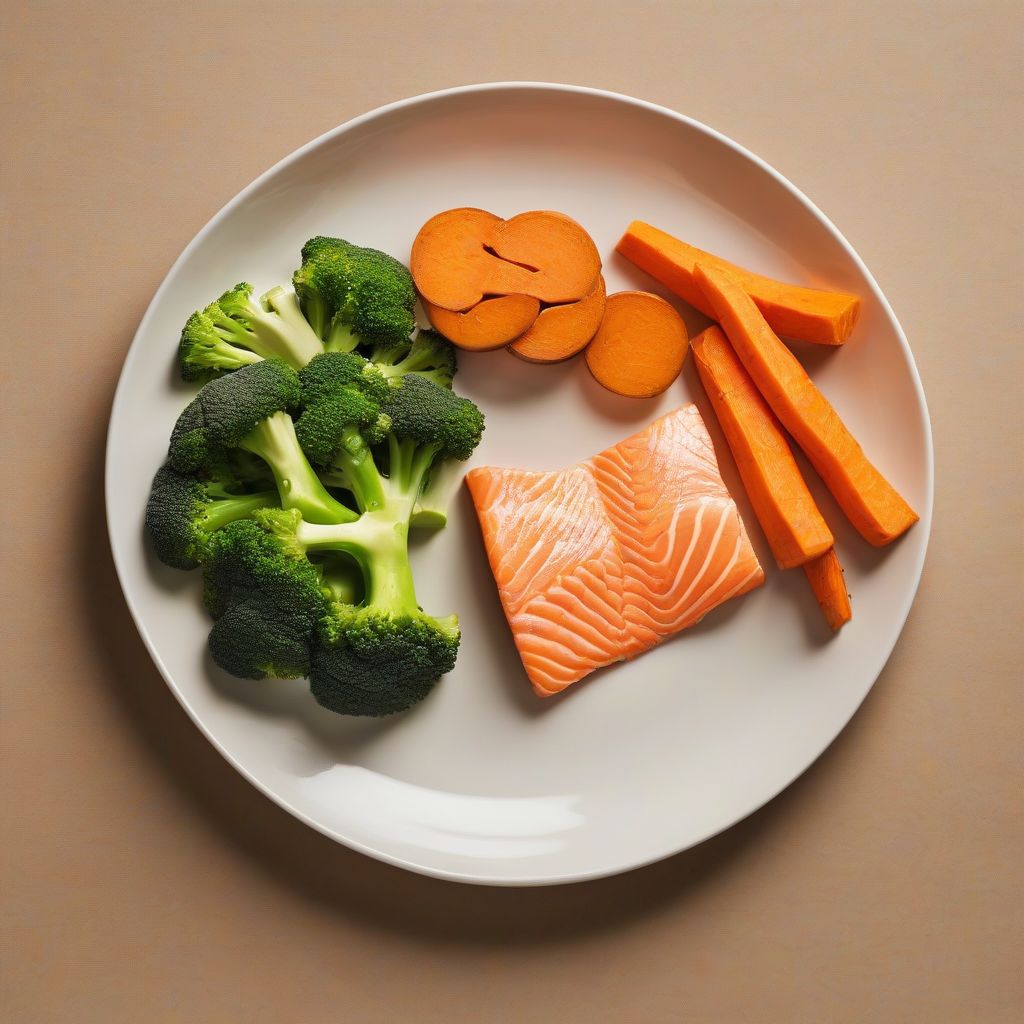“Give a man a fish, and you feed him for a day. Teach a man to fish, and you feed him for a lifetime.” This proverb highlights the importance of sustainable solutions, and it holds true even when we talk about nourishing our children. Providing them with nutritious meals isn’t just about filling their tummies; it’s about equipping them with the tools for a lifetime of healthy eating habits.
As a nutritionist and meal prepping coach, I’ve witnessed firsthand the transformative power of balanced meals for children’s development. It’s not just about their physical growth, but also their cognitive function, energy levels, and overall well-being.
This comprehensive guide will delve into the world of nutritious meals for children. We’ll uncover practical strategies, address common concerns, and empower you to make informed choices for your little ones.
The Building Blocks of Nutritious Meals for Children
Just like a house needs a strong foundation, our children need a balanced intake of essential nutrients for optimal growth and development. Let’s break down these nutritional building blocks:
1. Proteins: The Building Blocks for Growth
Proteins are essential for building and repairing tissues, making enzymes and hormones, and supporting a healthy immune system.
Best sources of protein for children:
- Lean meats: Chicken, turkey, fish
- Eggs
- Dairy products: Milk, yogurt, cheese
- Beans and lentils
- Nuts and seeds
2. Carbohydrates: The Energy Powerhouse
Carbohydrates provide the body with energy for daily activities and play a crucial role in brain function.
Opt for these healthy carbohydrate sources:
- Whole grains: Whole-wheat bread, brown rice, quinoa, oats
- Fruits: Berries, bananas, apples, oranges
- Vegetables: Sweet potatoes, peas, corn
3. Healthy Fats: Essential for Brainpower and Growth
Don’t shy away from healthy fats! They are crucial for brain development, hormone production, and the absorption of fat-soluble vitamins.
Incorporate these healthy fat sources:
- Avocados
- Nuts and seeds
- Olive oil
- Fatty fish: Salmon, tuna, mackerel
 Healthy meal for kids
Healthy meal for kids
4. Vitamins and Minerals: The Tiny but Mighty Nutrients
Vitamins and minerals play a vital role in various bodily functions, from boosting immunity to supporting healthy bones and teeth.
Ensure a variety of fruits and vegetables in your child’s diet to provide these essential nutrients.
Tackling Common Challenges: Picky Eaters and Busy Schedules
Let’s face it, getting children to eat healthy can sometimes feel like an uphill battle. Here are some practical tips to overcome these hurdles:
1. Conquering Picky Eating Habits
- Patience is key: It can take multiple attempts for a child to accept a new food.
- Make it fun: Cut fruits and vegetables into fun shapes, create colorful plates, or involve them in simple food preparation.
- Be a role model: Children are more likely to try foods they see you enjoying.
- Don’t give up: Keep offering a variety of healthy options.
2. Navigating Busy Schedules: Quick and Easy Meal Ideas
- Breakfast on-the-go: Overnight oats, yogurt parfaits with fruits and granola, whole-wheat toast with nut butter.
- Lunchbox heroes: Sandwiches on whole-grain bread with lean protein and vegetables, salads with quinoa or chickpeas, leftovers from dinner.
- Dinnertime delights: One-pan roasted chicken and vegetables, lentil soup, fish with steamed vegetables.
The Importance of Family Mealtime: Beyond Nutrition
Sharing meals together as a family offers benefits that extend beyond nutrition:
- Improved communication: Mealtime provides a relaxed setting for family conversations.
- Healthier eating habits: Studies show that children who eat meals with their families tend to have healthier diets.
- Stronger family bonds: Sharing meals fosters a sense of connection and belonging.
Expert Tips for Success
Here are some additional insights from my years of experience:
- Involve your children in meal planning and grocery shopping.
- Make small, gradual changes to their diets.
- Don’t use food as a reward or punishment.
- Consult with a registered dietitian for personalized guidance.
[amazon bestseller=”Children’s Cookbooks”]
Conclusion: Nurturing a Lifelong Love for Healthy Eating
Remember, every child is unique, and their nutritional needs will vary. By focusing on whole, unprocessed foods, offering a variety of options, and making mealtime a positive and enjoyable experience, we can empower our children to develop healthy eating habits that will last a lifetime.
Let’s continue the conversation! Share your favorite healthy meal ideas for kids in the comments below. You can also explore more helpful tips and recipes in our related articles: Healthy Meals for Kids and Kid-Friendly Dinner Ideas. Let’s work together to raise a generation of healthy and happy eaters!
